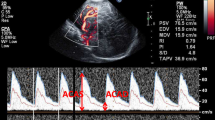Abstract
In this study, regional cerebral blood flow (rCBF) and the cerebral metabolic rate of oxygen (rCMRO2) were measured using positron emission tomography (PET) with oxygen-15 radiopharmaceuticals to clarify the pathophysiology of ventriculomegaly in the developing brain. Four hydrocephalic infants without severe neurological deficit were studied. Hypoperfusion was observed in the frontal, parietal, and visual association cortices which surrounded dilated anterior or posterior horns of the lateral ventricle. Lower rCMRO2 values than adult rates were observed in all cases. In the infants with markedly enlarged anterior or posterior horns, the surrounding cortices showed relatively lower rCMRO2 values with the fall of rCBF. Postoperative studies were performed in two infants. rCMRO2 increased in every region after ventriculoperitoneal shunting, but little change was observed in rCBF. These results indicate that metabolic deterioration occurs in the developing brain with hydrocephalus.
Similar content being viewed by others
References
Altman DI, Volpe JJ, Powers WJ (1989) Cerebral oxygen metabolism in new born infants with positron emission tomography. J Cereb Blood Flow Metab 9 [Suppl 1]: S25
Brooks DJ, Beaney RP, Powell M, Leenders KL, Crockard HA (1986) Studies on cerebral oxygen metabolism, blood flow, and blood volume, in patients with hydrocephalus before and after surgical decompression using positron emission tomography. Brain 109:613–628
Chugani HT, Phelps ME (1986) Maturational changes in cerebral function in infants determined by 18FDG positron emission tomography. Science 231:840–843
Chugani HT, Phelps ME, Mazziotta JC (1987) Positron emission tomography study of human brain functional development. Ann Neurol 22:487–497
Frackowak RS, Lenzi GL, Jones T, Heather JD (1980) Quantitative measurement of regional cerebral blood flow and oxygen metabolism in man using 15O and position emission tomography: theory, procedure and normal values. J Comput Assist Tomogr 4:727–736
Herscovitch P, Raichle ME (1985) What is the correct value for the brain-blood partition coefficient for water? J Cereb Blood Flow Metab 5:65–69
Lammertsma AA, Wise RJS, Heater JD, Gibbs JM, Leenders KL, Frackowiak RS, Rhodes CG, Jones T (1978) Correction for the presence of intravascular oxygen-15 in the steady-state technique for measuring regional oxygen extraction ratio in the brain. II. Results in normal subject and brain tumor and stroke patients. J Cereb Blood Flow Metab 3:425–431
Ogawa A, Sakurai Y, Kayama T, Yoshimoto T (1989) Regional cerebral blood flow with age: changes in rCBF in childhood. Neurol Res 11:173–176
Powers WJ, Stabin M, Howse D, Eichling JO, Herscovitch P (1988) Radiation absorbed dose estimates for oxygen-15 radiopharmaceuticals (H2 15O, C15O, O15O) in newborn infants. J Nucl Med 29:1961–1970
Rapin I (1976) Progressive genetic-metabolic diseases of the central nervous system in children. Pediatr Ann 5:313–349
Rekate HL (1984) To shunt or not to shunt: hydrocephalus and dysraphism. In: Little JR (ed) Clinical neurosurgery, 32nd edn. Williams & Wilkins, Baltimore, pp 593–607
Spinks TJ, Guzzardi R, Bellina CR (1988) Performance characteristics of a whole body positron tomography. J Nucl Med 29:1833–1841
Volpe JJ, Herscovitch P, Perlman JM, Raichle ME (1983) Positron emission tomography in the newborn: extensive impairment of regional cerebral blood flow intraventricular hemorrhage and hemorrhagic intracerebral involvement. Pediatrics 72:589–601
Weller RO, Shulman K (1972) Infantile hydrocephalus: clinical, and ultrastructural study of brain damage. J Neurosurg 36:255–265
Young HF, Nulsen FE, Weiss MH, Thomas P (1973) The relationship of intelligence and cerebral mantle in infantile hydrocephalus: IQ potential in hydrocephalic children. Pediatrics 52:54–60
Author information
Authors and Affiliations
Rights and permissions
About this article
Cite this article
Shirane, R., Sato, S., Sato, K. et al. Cerebral blood flow and oxygen metabolism in infants with hydrocephalus. Child's Nerv Syst 8, 118–123 (1992). https://doi.org/10.1007/BF00298263
Received:
Issue Date:
DOI: https://doi.org/10.1007/BF00298263




